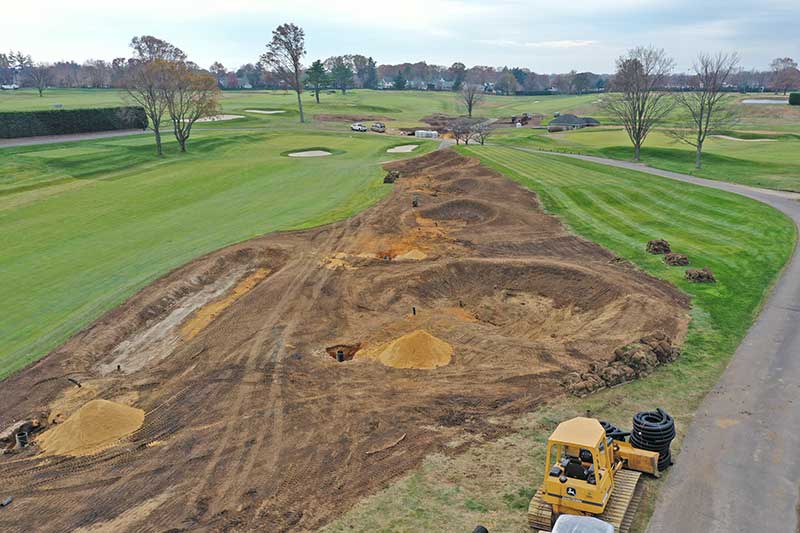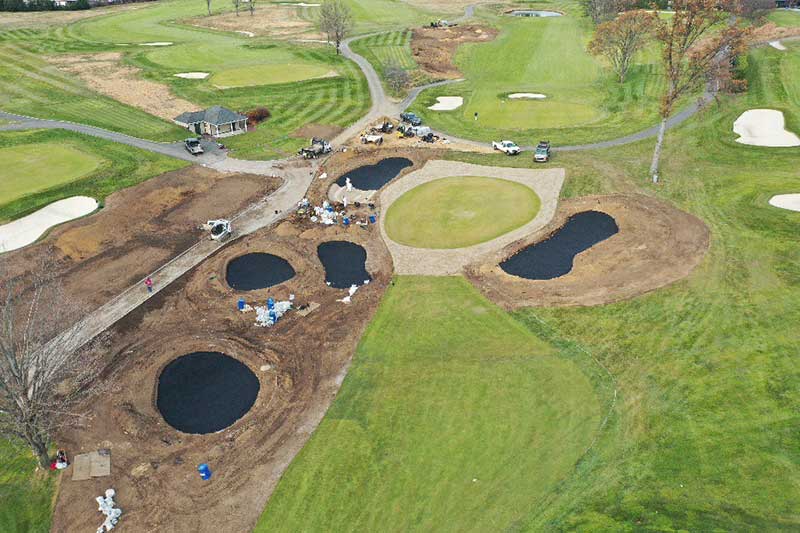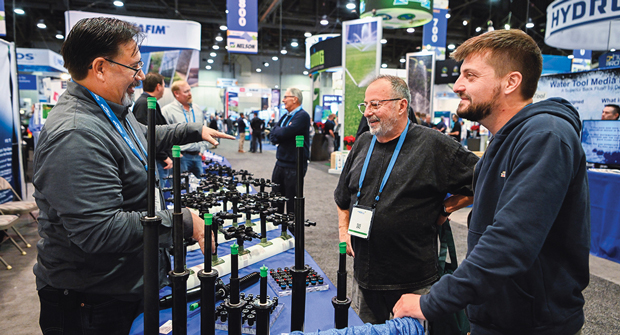Use bunkers to direct the golfer’s eye

A look at the rough shape of the bunkers on Cherry Valley’s No. 6 hole. (Photo: Chris Caporicci)
Bunker renovations offer a chance to take a second look at golf course flow and address additional pain points. This was the case with Cherry Valley Club in Garden City, N.Y., as Superintendent Chris Caporicci prepared to renovate the course’s bunkers. It was also an opportunity to address issues with the flow of golfers through the course, especially the 11th hole.
“On one of the holes, we had a bit of a bottleneck from the golf carts traveling through one area almost to the approach of the green, which was eventually going to create some turf issues as far as turf health and traffic,” he says.
Addressing the bottleneck was the top priority. Another issue was the layout of the course itself, including issues such as greens backing up to one another.
“On one of the holes, we had a local amateur tournament, and some of the feedback we got from players was it’s a shorter par 4, and if they hadn’t played the course before, they were aiming at the wrong green,” he says. “With that feedback, we thought, ‘How do we get the eye of the golfer or somebody who has not played here understanding … the direction of the hole?’”
Cherry Valley worked with architect Stephen Kay and contractor George E. Ley Co. to renovate and shape bunkers. At the suggestion of the contractor, the bunkers were lined with the Blinder Bunker system.
“You try to build a bunker that you don’t have rainwater and washouts running into it; sometimes it’s near impossible, especially if you get a thunderstorm with 2 inches of rain in 20 minutes,” he says. “This certainly helps alleviate all of the labor associated with repairing washouts.”
Caporicci says an additional tee was added to one hole, adding 40 yards to it. “That has people talking,” he says. “People don’t always think when you’re adding length to a hole that it’s the greatest thing.”
In addition, the team gave the 11th hole a major facelift.
“We moved one bunker, we widened the pinch point, we took out a cart path, redirected carts, moved a tee, and now have a shared cart path between two holes,” he says. “That then opened space around the green, where we moved one bunker, added two bunkers on the 11th hole and enlarged the putting surface.”

Drainage work on Cherry Valley’s No. 11 and No. 16 holes are complete, and the installation of Blinder Bunker material is almost complete. (Photo: Chris Caporicci)
However, Caporicci says, it was critical to ensure that the course stayed true to the original design.
“We don’t want to blow up a hole and change the integrity, but certainly want to make it something that’s a bit more functional,” he says. “The mantra here is ‘Make the course easier for a higher handicapper and a little more challenging for a lower handicapper at the same time.’”
The process is time-consuming, and there are always are unexpected bumps in the road. Caporicci encourages superintendents to be flexible with the design of bunkers.
“You put the shape of a bunker in the ground, you look at it from all different angles and you say, ‘Maybe we need to tweak this a little bit,’ or maybe you even say, ‘We don’t like that idea at all, let’s start all over,’” he says. “In our case, we have a lot of underground utilities, sewer, stormwater pipes, etc., that we have to plan around when discovered.”
Caporicci says the key to a successful bunker renovation is communication with the appropriate committees and the board as the renovation goes on.
One last thing, Caporicci notes, can be easy to overlook.
“Budget more for sod,” he says. “When reshaping bunker, the disturbed area is greater than expected.”












